Sexing a pigeon can be difficult because there are no obvious differences between the genders to the untrained eye. Generally, you have to examine a few areas and watch over a little bit of time in order to determine if you have a male or female pigeon.
Things to observe include claws, cloaca, wings and vocalization. You might also look out for certain features and personality traits.
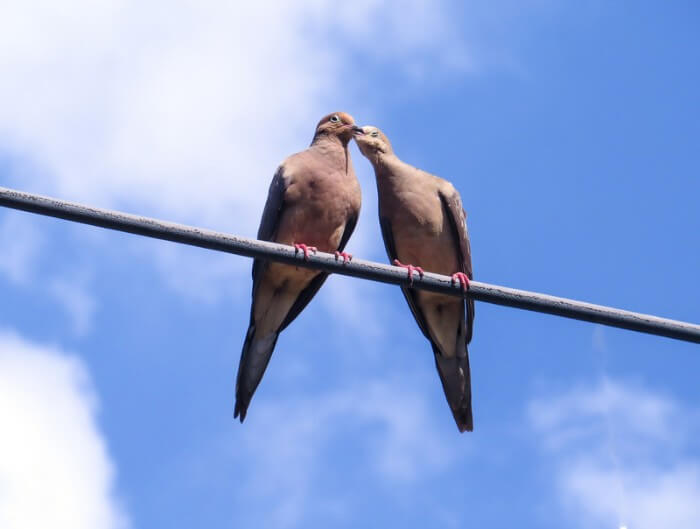
Of course, if you see one laying eggs, you can say that it’s female but it’s rare to see this happening.
There are subtle differences though, a couple of the best tells of your pigeons’ sex are their behaviour and their claws:
Male pigeons are more boisterous and louder than their female counterparts. They are also more prone to preening, head bobbing and puffing up their chest feathers.
A male pigeon’s side claw will be of equal length to its forward-facing claws. A female’s side claw is usually shorter than the other claws.
The Differences Between A Male And Female Pigeon:
Below is a breakdown of all the ways you can find out the sex of your pigeon.
1. Incubation
In many avian species, the female incubates the eggs while the male goes off in search of food.
Unfortunately, with pigeons, it’s not a sure-fire way to tell male from female as both birds will take turns incubating the eggs.
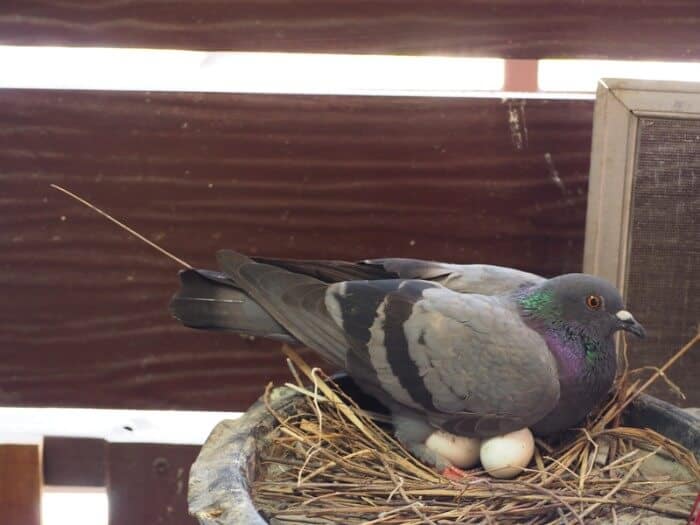
However, typically, the female takes the morning turn and the male takes over during the afternoon, so she can go feed. Don’t rely exclusively on this method of sexing though as pigeons will get their shifts mixed up sometimes.
2. Claws
If you compare the side claw of a male to its forward-facing claws, the side claw has an equal length to the rest.
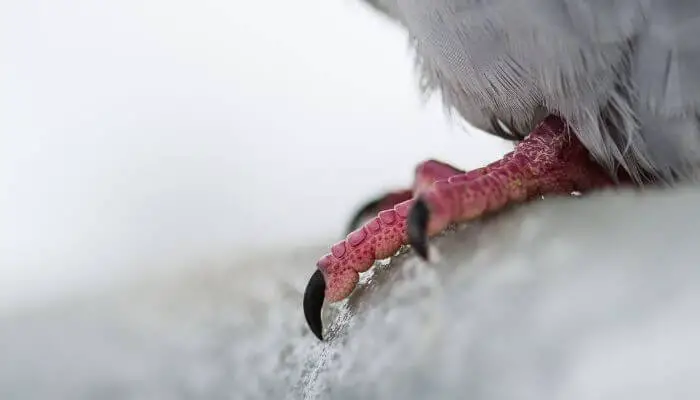
The female’s side claw is supposed to be shorter than its front claws.
Unless the different lengths are significant and can be seen easily by the naked eye, only physical measurements will confirm this.
3. Anus
Also known as the cloaca, the anal vents between males and females are different.
The female vent is wider, but you need good eyesight to spot the difference.
4. Wing Test
Hold a pigeon up by its wings between your hands.
When you do this it’s the tail feathers that you have to watch.
Apparently, if the tail feathers stick out straight from the body, you have a male in your hands.
If the tail feathers continue in an upright position, then you have a female.
5. Sound
Pigeons are known for their cooing.
Both genders coo, but females generally coo less.
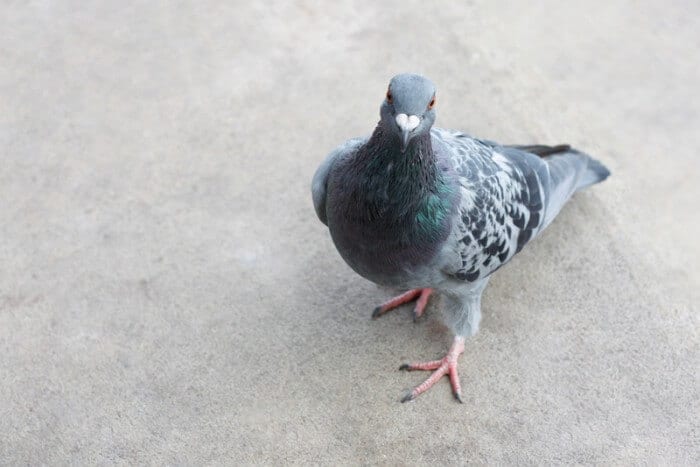
The theory is that females are calmer than males.
Males are much more vocal and loud.
It’s all to do with male testosterone. They like to be heard as well as seen.
6. Acceptance
It is known that when young pigeons are ready to mate and breed, and they have chosen the female of their liking, a curious ritual takes place.
The males choose the nesting site, but the females have to approve it.
She stays in place while the male flies off and brings back a straw or twig to give to her.
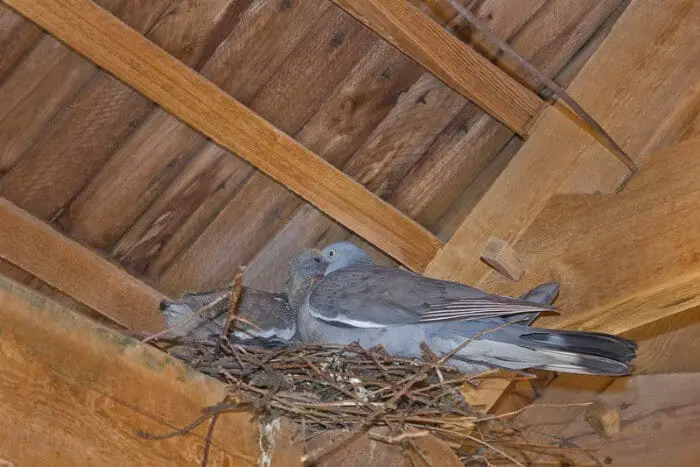
If she accepts the offering and places it at her feet, a sort of symbolic foundation laying, then you’ve got it.
She’s the female…it will just take a lot of patient watching.
7. Appearance
Males usually have slightly larger and more rounded heads, while the females’ heads appear to be not so round and have a flatter look.
Also, there are slight differences between their eyes.
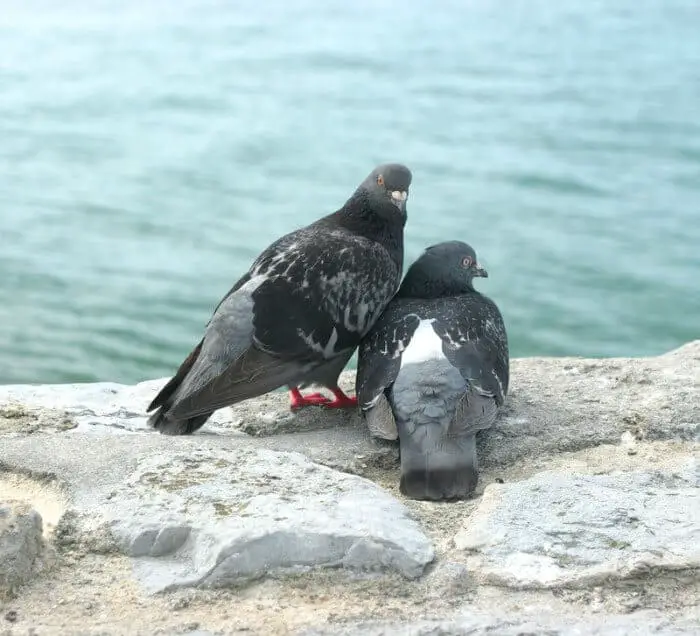
Female eyes appear to be completely round, whereas male eyes are slightly more oval.
The other physical difference is that males are slightly bigger and heavier than females.
8. Behaviour
The easiest way to tell the difference is by watching their behaviour.
Male pigeons are boisterous and loud much of the time.
They strut and preen with macho pride and are given to display.
This is probably the easiest and most telling way to sort out males from females, but it takes a bit of observation.
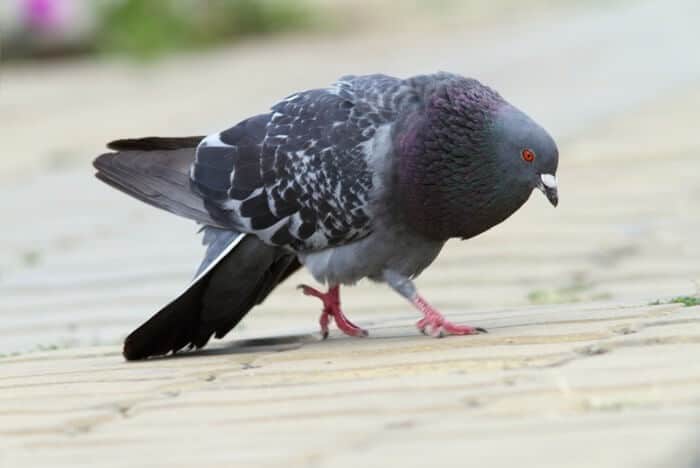
Pigeons have elaborate courtship rituals. The one running away playing the role of shy maiden is the female.
The thug bothering her, doing his best to get her attention with displays of tail dragging, furious head bobbing and puffing up of his chest feathers is obviously the male.
It’s the sort of boy meets girl scenario you can see in any mixed social gathering.
Even without the need to mate, male pigeons seem to act more aggressively.
9. Mating
If you catch them in the act of mating, then it’s a no-brainer.
To mate, the male has to climb on top of the female, so the bird wobbling about on top, trying to maintain balance, is the male.
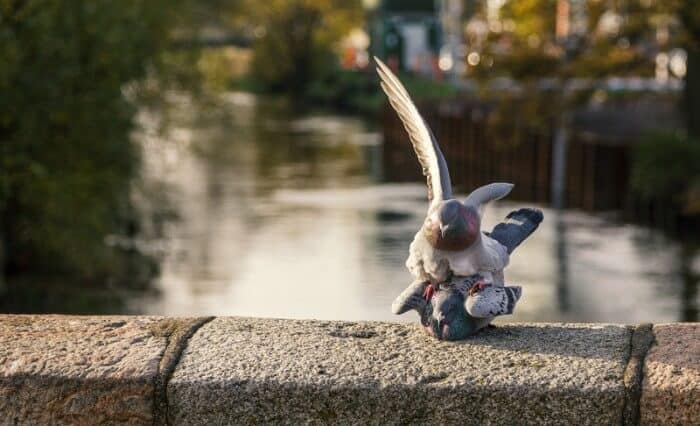
Sometimes when a young female is ready to breed, but has no mate, she crouches in the mating position in front of males, which is another indication of who is who.
FAQs:
Are Male Pigeons Bigger Than Female Pigeons?
In all breeds, a fully-grown male pigeon is larger than a fully-grown female. It is, however, not always easy to discern with the naked eye.
Males are plumper in body and have fuller wings than females.
Males are also slightly longer in length and these differences equate to a greater male body mass.
The typical body weight of a male is 240 grams although it can reach up to 300 grams. Females generally weigh in at around 200 grams.
Are Racing Pigeons Male?
Both sexes of pigeon are used for racing.
There are no statistics available to say whether either sex is superior or who wins more races but it is a male known as Bolt that holds the world record for pigeon speed.
Gender is actually exploited by the racing fraternity in a practice known as “widowing”.
Widowing is about which sex has the greatest motivation to race home the fastest.
It is assumed, stereotypically, when pigeon pairs are separated, that the male wants to rush home to his mate (or unpaired hens if he is single!) whereas females are more interested in flying home to their babies or eggs.
Depending on the race, the trainer will choose “widowhood” for either their female or male birds and separate them a few days before the race.

This article was written by our qualified veterinarian Cristina.
This is part of our commitment to providing you with the most trustworthy veterinary advice for your pigeons.
Sources:
